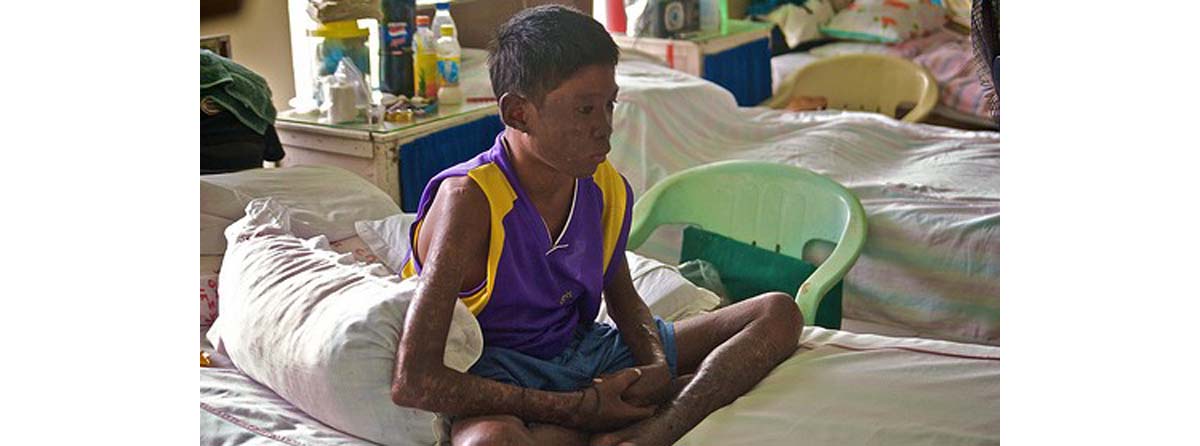Table of Contents
Most people think that leprosy is a thing of the past. Well, not quite. It is still around and still affects lots of people — with as many as 200,000 new cases registered every single year, including up to 100 in the United States. Most cases of leprosy these days happen in the developing world, but even in Europe the disease still occurs. The last remaining leprosorium on the European continent is located in Romania.

It is also known as Hansen’s disease, named after the physician Gerhard A. Hansen who discovered the causative bacterium in 1873. Leprosy is a very ancient disease. It is mentioned in the Bible and Vedas, and was surrounded by various myths. Many believed this disfiguring disease to be a curse from God. It was said to be a punishment people were saddled with for immoral behavior, and it was said to be incurable and so contagious that infected people should be isolated from normal social life. But with the progress of science, all these legends have been disproved.
Biological nature of the disease
The pathogen behind the leprosy infection is the bacterium Mycobacterium leprae. This is an aerobic (oxygen requiring) pathogen that has a slow growth rate with a long incubation time. The bacterium that spreads Hansen's disease gets transmitted through nasal droplets.
Upon infection, the bacteria primarily attack the patient's skin and later the peripheral nervous system, along with the mucosa of the upper respiratory tract.
Manifestations of leprosy
Leprosy takes 3 to 5 years and sometimes even up to 20 years to manifest symptoms post infection. It is a granulomatous disease, a disease in which affected tissues are characterized by inflamed granulation. Therefore, when symptoms start showing, Hansen's disease affects the skin — forming lesions, nodules, lumps and sores commonly known as plaques.
Nerve damage caused by leprosy leads to a loss of sensation and muscle weakness. In many cases, loss of fingers, toes and nose tips are associated with leprosy. This is not the direct result of leprosy, however. Rather, this is caused by secondary infections that occur due to the compromised immune system leprosy also leads to.
Other complications related to this disease include blindness or glaucoma, nosebleeds and a chronic, stuffy nose, face disfiguration that includes lumps, permanent swellings and bumps, erectile dysfunction and infertility in men, and kidney failure.
Leprosy comes with many symptoms and in many forms
According to the World’s Health Organization, leprosy can be subdivided into two major categories, paucibacillary and multibacillary. This classification is based on the proliferation rate of the bacteria.
In its paucibacillary form, the bacteria grow in small numbers as compared to the multibacillary form. Depending on the symptoms, doctors distinguish six types of leprosy. They differ in particular manifestation and severity.
- Eichelmann K, González González SE, Salas-Alanis JC and Ocampo-Candiani J. (Sep 2013) Leprosy. An update: definition, pathogenesis, classification, diagnosis, and treatment. Actas. Dermosifiliogr. 104: 554-563
- Saonere JA. (Nov 2011) Leprosy: An overview. J. Infect. Dis. Immun. 3: 233-243
- Duthie MS, Gillis TP and Reed SG. (Nov 2011) Advances and hurdles on the way toward a leprosy vaccine. Hum. Vaccin. 7: 1172-1183
- Girão RJ, Soares NL, Pinheiro JV, Oliveira GD, de Carvalho SM, de Abreu LC, Valenti VE and Fonseca FL. (Aug 2013) Leprosy treatment dropout: a sistematic review. Int. Arch. Med. 6: 34.
- Photo courtesy of moyerphotos by Flickr : www.flickr.com/photos/moyermk/4120898861/
- Photo courtesy of Duckwailk by Flickr : www.flickr.com/photos/duckwalk/9636420141


Your thoughts on this